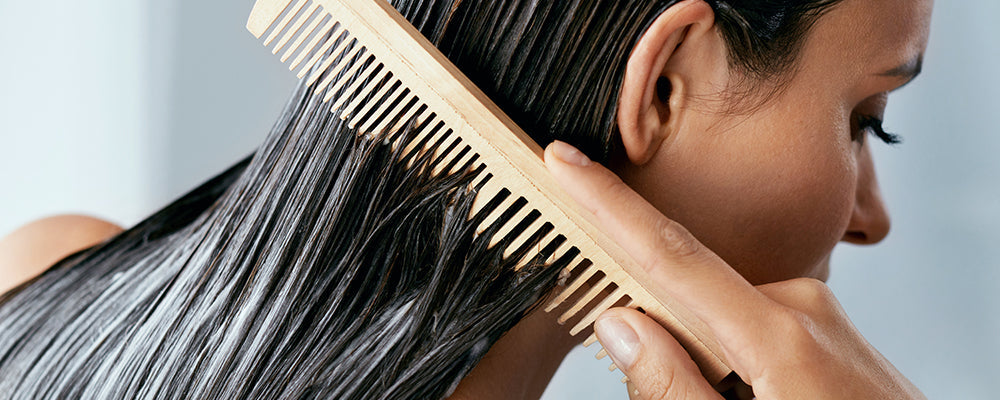Why is hydration so important?

The importance of hydration and how to support moisturized, healthy hair.
Signs your hair needs moisture
Healthy hair relies on a balance of hydration and nutrients. When your strands are dehydrated, they become more vulnerable to damage, breakage, and dullness. Here are the tell-tale signs your hair is crying out for moisture:
Increased Frizz
Frizz occurs when your hair seeks moisture from the air around it. If you notice excessive frizz, especially in humid conditions, it’s a sign that your strands need proper hydration.
Hair Breaks Easily
Dry hair is less elastic and more prone to snapping or breaking during brushing, styling, or even washing. If you’re noticing more breakage or split ends, it could be due to a lack of moisture.

Tangles & knots easily
Dehydrated hair often has raised cuticles, which cause strands to catch on each other and form tangles. This can make detangling a painful process and lead to more damage.
It Dries Too Quickly
While hair that dries quickly after washing might seem like a good thing, it can actually be a sign of high porosity. This means your strands are losing moisture as fast as they absorb it.
Understanding you hair type
Hair porosity refers to your hair's ability to absorb and retain moisture, largely determined by the state of the hair cuticle. There are three levels:
Low Porosity: The cuticles are tightly packed, making it difficult for moisture to penetrate. Products can sit on the surface, and buildup is common.
Medium/Normal Porosity: The cuticles are slightly raised, allowing moisture to be absorbed and retained effectively. Hair tends to respond well to most products.
High Porosity: The cuticles are highly raised or damaged, making it easy for moisture to enter but also escape. This type is prone to dryness and breakage.
How to Test Your Hair Porosity
Take a clean strand of dry hair and drop it into a glass of water.
Floats at the top: Low porosity.
Hovers in the middle: Medium/normal porosity.
Sinks to the bottom: High porosity.

Building a moisture-building routine
At the heart of any effective hydrating hair care routine lies a true hero product: conditioner. Our Bio-Cleansing Conditioner takes things a step further by doubling as a cleanser. Dry hair is sometimes caused by over washing so adding a co wash to your hair care routine instead of a ‘regular’ shampoo, will leave your hair clean without sacrificing the moisture it needs to stay healthy and hydrated.
While a co-wash is a great start, your hair care routine doesn’t have to stop there. Adding a Hair Masque or a Leave-In Conditioner to your lineup can deliver an extra dose of hydration that transforms dry, brittle strands into silky, shiny perfection.
Hair Masques: are like a deep-conditioning treat for your hair, working to repair and hydrate on a deeper level.
Leave-In Conditioners provide long-lasting moisture throughout the day, protecting your hair from dryness and environmental stressors. + our Untangle Leave-In Conditioner doubles as a heat protectant for extra protection
Pro Tip: For extra-dry hair, don’t be afraid to double up! Use a Hair Masque and a Leave-In Conditioner in the same routine
Complete Your Routine
Pair these products with the Charcoal Detox Scalp Scrub 1-2 times a month to remove extra build-up for better product absorption. This will help your strands absorb more of the hydrating ingredients.
Hydrated hair isn’t just about appearance; it’s about keeping your strands strong, resilient, and full of life. Start with the right conditioner, build with nourishing treatments, and watch your hair transform into its healthiest, most hydrated version yet.
